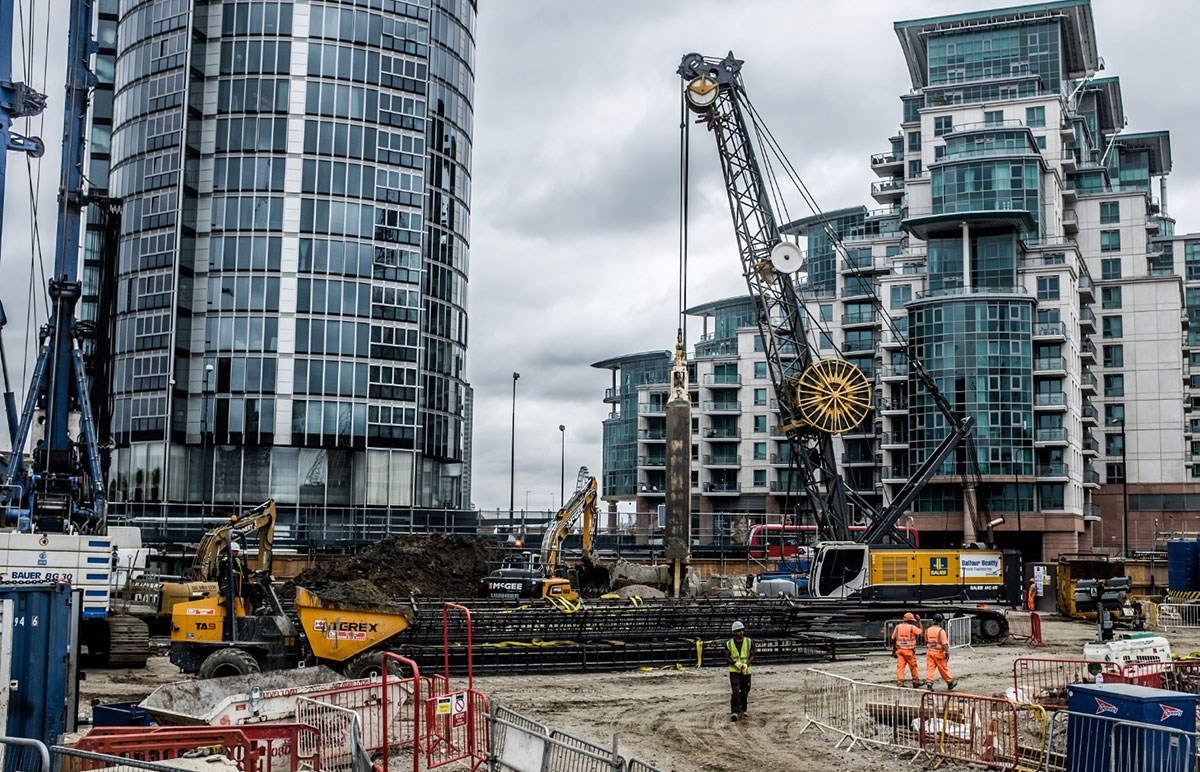All About Geotheta
All About Geotheta
Blog Article
Geotheta Fundamentals Explained
Table of ContentsWhat Does Geotheta Do?Geotheta Fundamentals ExplainedThe Facts About Geotheta Revealed5 Easy Facts About Geotheta Shown
They work together with civil engineers, structural engineers, architects, and various other professionals to integrate geotechnical considerations right into the overall project layout and building process. This requires effective teamwork, sychronisation, and communication to make certain that the geotechnical elements align with the job objectives and meet regulatory requirements.Mining & Products Engineering: Concepts of boring, penetration prices, and variables impacting the selection of boring method. Blowing up techniques in surface and below ground operations. Mechanical and constant techniques to fragmentation, including longwall shearing and fullface boring.
Modelling of piece and particle size circulations; comminution as a transfer feature. Comminution modern technology: crushing, grinding, size category. Integrated analysis of fragmentation and comminution procedures. Provided by: Mining & Products Design.
Some Known Facts About Geotheta.
Bachelor's level programs in civil, geotechnical, geological, and environmental engineering typically last four years and include basic education and learning training courses in English, social science, and the humanities, in addition to training courses in advanced mathematics, structural geology, and liquid mineralogy. (https://geotheta.blog.ss-blog.jp/2024-08-02?1722614750)
Geotechnical engineering includes the analysis of the soil and rock conditions at a certain site, and their ramifications for the advancement of that site. As most frameworks depend on the ground for assistance, it is without surprise that a comprehensive understanding of the ground conditions, and the viability of structure systems, are important to the lasting security and efficiency of the building or structure.
Being experts in the examination of geological formations and ground behavior, geotechnical designers carry out scientific examinations and testing to recognize the effect these geological formations might carry the design and building of structure, civil and facilities projects. This expertise is important for the design and building and construction of structures, roadways, tunnels, dams, bridges, and supply of water and sewer systems.
The geotechnical team at Douglas Allies regularly speak with architects, style designers, developers, and contractors to make recommendations on layout and growth proposals to ensure that the developed structures are accordingly made for the ground problems. For example, the design of footing systems needs to think about the weight of the structure, the capacity of the ground to support that weight together with motion resistances and efficient construction.
Some Known Details About Geotheta
This task is substantially simplified by the use our Douglas Map geospatial platform which makes this information readily obtainable in a very easy to utilize internet browser interface. A geotechnical engineer will route the drilling of boreholes and test pits to gather soil and various other samples, and also assess surface area attributes and ground direct exposures to create a geotechnical version of the subsurface conditions.
Relying on the job kind and ground conditions encountered, lab screening might among various other points analyze strength, compressibility, sensitivity and/or permeability of dirt and rock examples. After this data is collected and looked at, the results are utilized for a geotechnical version of the website, which is generally presented as areas throughout the website.

A geotechnical investigation naturally can only evaluate the ground problems at the areas pierced or excavated. Natural variations in dirt and rock conditions can happen throughout a website and in between test locations. It is therefore excellent technique that the geotechnical designer be retained throughout construction of the job to give on-site verification that the ground problems come across are consistent with the expectations and suggestions provided in the geotechnical investigation report.
The Ultimate Guide To Geotheta
Geotechnical designers use their in-depth understanding of soil and rock to assess threat and resolve issues on diverse framework projectsGeotechnical design is a specialist branch of civil design which considers the behavior of earth products and the application of dirt and rock auto mechanics. Tailings Engineer. As a geotechnical designer, you will certainly assess the physical, mechanical and chemical buildings of soil and rock in order to make structures, retaining structures and earthworks
Geotechnical engineering is very closely connected to and overlaps with, both engineering geology and ground design - https://penzu.com/p/952dfde2dba9ee4f. It's feasible to specialise in geotechnics or benefit a geotechnical business but be called a design rock you could check here hound or a ground engineer. As a geotechnical designer, you'll need to: build and maintain partnerships with clients and other specialists associated with the site, throughout each projectmaintain safety and security requirements on website bear in mind price effects when you make recommendationsstudy geological maps and aerial photographs from a series of sources and from different time periodsexamine construction intends to see how viable they are based on your understanding of the siteinvestigate threats or geological risks for the sitesearch for eco sensitive features, such as garbage dump beginning to develop factual and interpretive ground modelsplan field investigationsdrill and analyse samples of bedrock, dirt, groundwater and extra products oversee various other specialists on sitesolve technological problems as they occur, such as unanticipated structures at drill sitesmonitor conditions during and after building to see to it frameworks are secure in the short and long termadding data collected on site to your preliminary researchcreating geotechnical estimations, drawings, and two or three-dimensional computer designs interpreting the datamaking referrals regarding the recommended use the site

Report this page